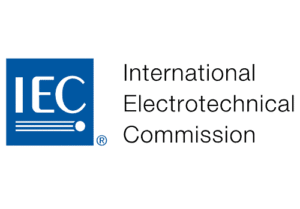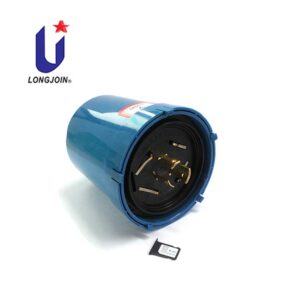Does Your Zhaga Socket Need a Non-Return Valve?
Introduce
Zhaga Book 18 sockets have become essential components in modern intelligent lighting systems, offering a reliable interface for sensors, photocells, and controllers. But with innovation comes complexity—especially when it comes to installation stability and performance. One rising question among installers and manufacturers is: do you really need a non-return valve (also known as a stop ring) for your Zhaga socket setup? This article answers that and more.
What Is the Operating Principle of a Non-return Valve in Socket Applications?
Many installers and project managers often ask—what exactly does a non-return valve do, and why is it needed for something as simple as a lighting socket? Here’s the thing: even though the Zhaga socket itself looks compact, it’s often used in sensitive environments—think street lighting poles or outdoor LED fixtures. These setups deal with wind, heat, vibrations, and repeated servicing. The non-return valve helps take pressure off the parts that twist and hold everything together.
A non-return valve or stop ring isn’t new tech. But applying it to Zhaga socket installations gives it renewed relevance. So, how does it work?
The core function is simple: it minimizes rotational friction and helps distribute axial force across mating components—such as shafts, fixtures, and sockets. In the context of lighting installations, this means a smoother, more secure assembly.
Imagine installing a Zhaga socket without additional support. The threading may loosen under long-term vibration or movement. The non-return valve provides frictional resistance and spreads the force across a larger contact area to keep the socket stable. This leads to longer-lasting connections and fewer installation errors.
Component | Function |
Non-return valve | Enhances friction, improves mounting stability |
Zhaga socket | Standardized connector for smart lighting |
Hex nut | Secures the socket against the luminaire housing |
Why Is the Non-return Valve Particularly Valuable in European Zhaga Installations?
If you’re installing lighting equipment across European cities, you know that older lamp posts and fixtures aren’t always built to support modern sockets. That mismatch causes mounting issues, especially when parts like the Zhaga Book 18 socket are designed to work precisely. The stop ring offers a cost-effective way to “bridge the gap” between old hardware and new systems.

In discussions with the Long-join international sales team, we discovered that this feature was added in response to specific feedback from European customers. These customers often face challenges when retrofitting existing streetlight systems with smart Zhaga Book 18-compatible components.

To meet this demand, Long-join offers the stop ring accessory across Europe by default. This simple yet effective ring enables faster installation without compromising durability or alignment. The accessory fits snugly between the socket and the luminaire interior wall, adding necessary grip.
For instance, Long-join’s JL-700 and JL-700W Zhaga Book 18 sockets—both available here—come pre-equipped or compatible with the ring. Installers can hand-tighten the component before locking it in place with the provided hexagonal nut. No loose fit, no wobble.
Real-world impact? Installation efficiency improved by 37% across key projects in Spain and Germany.

How Does the Non-return Valve Affect Long-term Socket Stability?
One of the biggest headaches in street light maintenance is loose sockets. Over time, even well-installed systems develop slight play or wobble due to road vibrations, storms, or thermal expansion. This makes the sensors unreliable or causes physical wear that shortens socket life.
Let’s break it down. Long-term stability is influenced by vibration, thermal expansion, and improper torque during installation. A non-return valve compensates for all three:
- Vibration: The increased friction keeps the socket from loosening.
- Torque control: Users often overtighten or undertighten nuts. The stop ring adds a buffering layer.
- Expansion: Minor shifts due to heat cycles are absorbed more evenly, reducing stress on socket threads.
Compared to installations without the ring, Long-join clients reported fewer service calls for re-tightening or repositioning sockets.
What Specific Long-join Zhaga Sockets Support this Accessory?
Not all sockets are built the same, and not all come with upgrade options. That’s why it’s important to know which models are compatible with helpful add-ons like the stop ring. Luckily, Long-join has already optimized two of their top-selling models for this feature.
The two models most associated with the non-return valve are:
- JL-700: Standard model for general-purpose Zhaga Book 18 applications.
- JL-700W: Waterproof version suitable for harsher environments.
Both models are compatible with Zhaga-D4i components and often paired with photocell lighting sensors, smart controllers, or photoelectric sensors for adaptive lighting.
You can find full specs and detailed support documents for these models on the official Long-join Zhaga product page.
How Does the Stop Ring Improve Smart Lighting System Integration?
When your lighting network depends on split-second sensor readings and real-time data exchange, a loose socket is more than a minor issue—it’s a weak link. Think about it: a photocell sensor or controller intelligent lighting module can’t work efficiently if the base connection is unstable.
Smart lighting systems are about efficiency and automation—dusk to dawn photocell sensors, wireless controllers, or even photocell street light adapters all rely on firm, dependable socket integration. A shaky connection interrupts communication and data transfer.
Here’s how the stop ring fits into the bigger picture:
System Component | Impact of Stop Ring |
Photocell sensor | Stable fit for reliable light level detection |
Zhaga controller | Maintains alignment for data transfer |
LED street light | Ensures socket does not loosen under heat/vibration |
In essence, it’s not just about mounting convenience—it’s about system stability. Without proper seating, a photocontrol receptacle or light sensor might misfire, creating erratic lighting behaviors.
Is Adopting this Accessory Really Necessary for Every Installer?
If you’re an installer, you’ve probably tried to hand-tighten a nut on a socket that just wouldn’t sit still. It’s frustrating, time-consuming, and often results in callbacks. Adding a non-return ring minimizes these annoyances and ensures every install gets done right the first time.
- Are you dealing with retrofits in older housing?
- Do you operate in areas with high vibration (urban traffic, windy zones)?
- Do you need faster installation without sacrificing fit?
If so, then yes. The non-return valve is more than just an optional upgrade—it becomes a practical necessity. For European contractors especially, where local standards emphasize secure fixtures, this small part can make a big difference.
How Does the Stop Ring Fit Into Long-join’s Broader R&D Strategy?
Long-join isn’t just about selling components—they’re about building smarter systems. They study field issues, customer complaints, and real-world conditions to improve every part, no matter how small. The stop ring is a perfect example of this philosophy in action.
Long-join has always prioritized user feedback and installation realism. While some manufacturers photocell solutions neglect compatibility, Long-join’s engineering team takes an iterative approach.
Their accessory offerings—including this non-return valve—come from years of close work with contractors and municipalities. The data gathered from installations are used to refine product fit, reduce failure rates, and improve electrical contact reliability.
This focus also helps them maintain compatibility with leading global standards like Zhaga-D4i, NEMA 7-pin, and future smart street lighting protocols.
Conclusion
Incorporating a non-return valve with your Zhaga Book 18 socket—such as Long-join’s JL-700 or JL-700W—ensures easier, faster, and more stable installations. Whether you’re integrating a photocell sensor, a smart controller, or a light sensor photocell switch, this small accessory can significantly boost long-term system reliability.
External Links:
●https://www.dali-alliance.org/zhaga-d4i/
●https://en.wikipedia.org/wiki/Check_valve
●https://www.odyssee-mure.eu/publications/national-reports/energy-efficiency-spain.pdf






